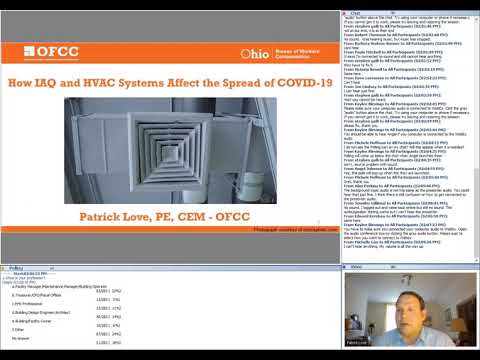
Capsule inhibitory medicine may become an necessary addition to anti-sepsis therapies. One of primary challenges in the therapy of sepsis attributable to Gram-adverse micro organism is the discharge of endotoxin from micro organism due to killing by antibiotics and/or phagocytosis in the liver and the spleen. An efficient therapy should comprise the neutralization of endotoxins. LPS aggregates might interact with serum and membrane proteins such as LBP (lipopolysaccharide-binding protein) and CD14. LPS can set off systemic hyper-inflammatory response with multiple organ failure and lethality. LPS induces inflammatory cells to express proinflammatory cytokines IL-8, IL-6, IL-1β, IL-1, IL-12, and IFNγ .

Bacteria with “a biofilm background” keep away from phagocytosis by naïve macrophages and sometimes trigger chronic infection . Biofilms are accounting for over 80% of microbial an infection in human physique . When micro organism are exposed to sub-inhibitory ranges of antibiotics, resistance to different structurally and functionally unrelated antibiotics is also observed .
Numbers Of Microorganisms That Acquire Access To A Bunch, Evasion Of Host Defenses, And Toxin Production
These occasions usually happen when acceptable antimicrobial therapy has been instituted . In some infections with bacteremia, antibiotic therapy can cause launch of bacterial endotoxin-like products and cause a Jarisch–Herxheimer reaction . It happens after initiation of antibacterials in louse-borne relapsing fever, tick-borne relapsing fever, syphilis, Q fever, bartonellosis, brucellosis, tripanosomiasis, leptospirosis, and so on. . In leprosy the dangerous effects of useless micro organism is very demonstrative. Single dose of 10 mg/kg rifampicin renders bacilli non-viable from ninety nine to 99.ninety nine% ; 400 mg ofloxacin or 800 mg pefloxacin kills 99.99% viable bacilli . It suggests that lots of the manifestations of leprosy which follow preliminary therapy have to be as a result of antigens from dead organisms .
Entering the bloodstream in numerous types (planktonic, encapsulated, L-kind, biofilm fragments), they trigger various kinds of sepsis (fulminant, acute, subacute, persistent, and so forth.). Sepsis therapy consists of antibacterial therapy, help of host vital features and restore of homeostasis. A bacterium killing is just one of numerous aspects of antibacterial therapy. Bacteremia can have a number of important health penalties.
Malassezia has been hypothesized as the infectious agent in several pores and skin disorders, namely dandruff, atopic dermatitis, tinea versicolor, and to a lesser extent psoriasis . Malassezia produces lipases, phospholipases, and allergens , which can damage the integrity of the pores and skin by inducing irritation and triggering an immune response . Up until the Eighties, microbiologists routinely relied on culture-dependent strategies for microbial isolation, identification, and characterization. Colony morphology, stains (i.e., Gram stain), biochemical traits (i.e., coagulase test), motility tests, antibiotic resistance profiles, and other characteristics guided bacterial and/or fungal identification and taxonomy.
Host Resistance
Because of this problem, it’s commonplace apply to vary catheters regularly (e.g., each 72 hours for peripheral intravenous catheters). Virulence is the measure of the pathogenicity of an organism. Virulence may be measured experimentally by determining the variety of bacteria required to trigger animal demise, illness, or lesions in a defined period after the micro organism are administered by a delegated route. Resistance to bacterial infections is enhanced by phagocytic cells and an intact immune system. Initial resistance is due to nonspecific mechanisms. Susceptibility to some infections is larger within the very younger and the very old and in immunosuppressed patients.
However, these micro organism must possess specialized mechanisms to guard them from the harsh effects of the lysosomal enzymes encountered inside the cell (see Ch. 1). Pathogenic micro organism can be grouped into three classes on the basis of their invasive properties for eukaryotic cells (Fig. 7-four; Table 7-three). In sure infections (e.g., tuberculosis), tissue harm outcomes from the poisonous mediators released by lymphoid cells rather than from bacterial toxins. Symptoms of intense irritation and shock happen in some gram-positive bacterial infections due toA) A-B toxins.B) lipid A.C) membrane-disrupting toxins.D) superantigens.E) erythrogenic toxin.
The Effectiveness Of Antibacterials Within The Bloodstream
Gram unfavorable bacterial species are liable for approximately 24% of all instances of healthcare-associated bacteremia and 45% of all cases of group-acquired bacteremia. In basic, gram negative micro organism enter the bloodstream from infections within the respiratory tract, genitourinary tract, gastrointestinal tract, or hepatobiliary system. Gram-unfavorable bacteremia happens extra regularly in elderly populations and is related to greater morbidity and mortality in this population.